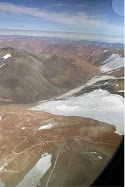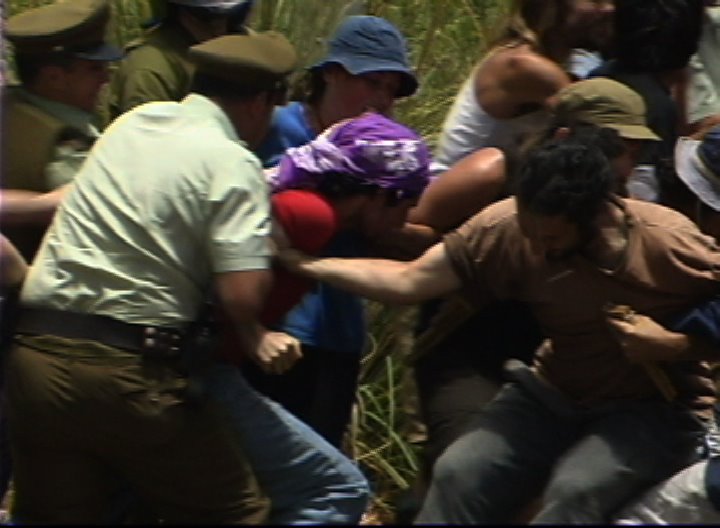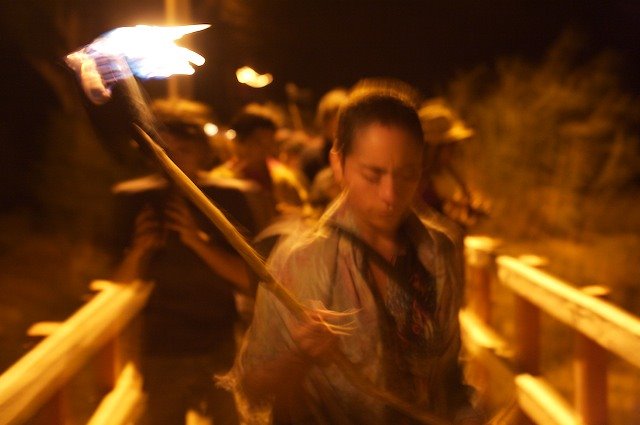
"Pascua Lama, which is so complicated by the presence of bodies of ice cover was redesigned with a pit not interfering. Lost 17% of the reserves. "
Juan Pablo Milana - Geólogo glaciólogo (above picture)
Translated from original article in
http://www.diariodecuyo.com.ar/home/new_noticia.php?noticia_id=334015
written by DANIEL TEJADA Diario de Cuyo
Adviser to the Independent Citizens Foundation, specializes in ice and has worked in at least one mining project moving glaciers in Chile.
Juan Pablo Milana is the advisor to the Independent Citizens Foundation (Fuci) that discussed last week with specialists from the Chamber of Mines about the law vetoed by glacier Cristina Fernandez de Kirchner. In the presence of the Senators of the National Front for the Victoria Marina and Cesar Gioja Riofrío, progress was made on points of agreement to propose a new policy that protects the ice from the mountain. In a conversation with WHOSE MINING, Milana ruled defender mining controls.
- Read the law of glaciers vetoed Cristina?
Well, actually I read a lot before the veto and I attempted several times to meet with the senators and the Environment Committee of the Senate before they were to tell the bad points of that text, because no condecían a law of glaciers.
- What was wrong?
I always say that we must learn from the mistakes you committed. The first mistake was marrying a law and a national inventory of glaciers with an institute, in this case Ianigla (Instituto Argentino de Nivología, Glaciology and Environmental Sciences), which has already taken 35 years and did nothing. Only did the inventory of glaciers in the basin of the Rio Mendoza. Thinking about giving this Pharaonic seems so silly. He is a very widespread. I believe that a national law has to encourage horizontal growth in the provinces and not favor one province with this budget, which will be Mendoza, and the rest of the provinces are going to look. And I can assure you that it is impossible to monitor all glaciers in the country from Mendoza.
The ideal of a law that would be of glaciers resulting budget to the provinces with glaciers, which will generate an institute with offices cryosphere.
- Is the law of glaciers?
Yes, I never said that a law is not necessary to ice. On the contrary. But as drafted was a bit vague and included terms and definitions that make it gray. We want a law that is inevitable and white does not give rise to gray because that does not suit us. If we want to protect the ice, say "ice". Period.
- What we know about glaciers in San Juan? Do we know how many there are, briefly, where are they located?
I've tried to go in groups, but the lack of support for these studies is impressive. To address the study of all the glaciers in San Juan need a fairly large support. We have gone with our resources to the mountain, with equipment provided, as we like but we have never had support. The problem in San Juan is ignorance. There was recently a meeting convened by the Chamber of Mines and I was horrified to hear the director of the Department of Water (Jorge Million) saying that the glaciers did not have a significant role in the discharge of the Rio San Juan. Of course I told him everything that he had to say. That shows ignorance. And if you do not know something, do not you go to protect. So it is good that the nation is down from a line to say that glaciers are important and that we must study them and protect them while the local government departments to say no.
-If I could summarize in one sentence you should say what the law of glaciers, what would it be?
-In fact, if I were a legislator, he would have changed the title and would have "law of ice." Because I believe that the philosophy of law must be the protection of water resources in the solid state. And there is a law on water but there is a law of ice. But the name "glacial" is a box-office ... then he has "glacier." But if the law read "Protect bodies of ice that remained over two years on the ground ready. Gone are the gray areas: ice, protecting it. - You considers himself anti-mining "?
No, not at all. I am pro-environment and believe the mining industry needed one. I've always said. So no I agree with many groups who say "no to mining", but get into a car that is made, half of mining products. I'm not at all "anti-mining" even though I have cataloged as such. And it could be because I am not a geologist. But I think you have to do a proper assessment of the pros and cons before you start a mine. If you really need it or how we are going to do to use that to develop. Developed countries used mining but had a plan of reinvestment.
- Is it possible to think without affecting glaciers in mining? What major public works such as tunnel Agua Negra?
Yes, absolutely. In fact the Pascua Lama project that is so complicated by the presence of bodies of ice cover was redesigned in a pit with no interference. Lost 17 percent of gold reserves but good, everything is possible.
Of course this is a bid. Employers will want to get the juice to the mountain the most able and hence the role of the state and NGOs, to which also belong to limit it a bit. The important thing is to have open discussion.
- Is the movement of glaciers or is it science fiction?
It is perfectly possible. You can move mountains. The proof of the pit mine in Chile in the second region that is almost 800 meters deep and 2 miles long. They made a mountain upside down, well impressive. The same with the glaciers. The ice weighs three times less than the rock. Trucks giants have their spare capacity. As defenders of irrigators, when I was in Chile, we did a project to modify the plan of moving ice that the company was facing.
- What kept the original potential of the glacier?
No one knows that. It was a test and then the Chilean law establishes compensation. In the analysis of this breaking of the ice company accepted that it would not be successful. If it was, the better.
But we had to pay compensation for such breakage. They had to build a dam in height. We gave our verdict: we can do but there are no guarantees it will work.
- What is the worst case scenario if it was to work without effective controls on the glaciers? What would be the worst possible damage to the glaciers?
-How are things given, the biggest problems I see in the current mining operation would be in the water emerging, not glaciers. Logically, the glaciers are going to be affected in one way or another. Are burning 220,000 liters of fuel per day or something. This produces a warming, combined with the dust that is generated from the movement of machinery and explosions. This dust settles on the glaciers and the melting increases and the deterioration progresses. A possible scenario is that there glaciers disappear and the big guys are a little polluted, because that dust is not very good.
- But can be moderate with controls?
-At least you can know what happens. So, you can sample and see how is the evolution of water quality that comes from the glaciers. We proposed a series of checks, because sometimes natural disasters happen, accidents happen and that is unpredictable. So we in the area of Pascua Lama had proposed a camera system connected on-line, so anyone could see how they are conducting operations. That is the problem that I see in Veladero.
A glaciology is entered from three different professions, according to Milana. Are physicists, who study the ice crystallography, how ice is formed. They are also geographers, who study the formation of glaciers, but a bit more superficially. And the geologists who study it as part of the surface and the earth's crust. Milana graduated from the BA in geology in the year'87 and graduated from the Ph.D. program in'91, both studied at the Universidad Nacional de San Juan. His doctoral dissertation will not be referred to the glaciology because no guardian for such studies. Glaciologist title does not exist, like the sedimentologist. But disciplines are studying and Milana credited with publications in journals, he said.
“La ley de glaciares estaba redactada de manera ambigua”
Asesor de la Fundación Ciudadanos Independientes, es especialista en hielos y ha trabajado en al menos un proyecto minero de traslado de glaciares en Chile.
DANIEL TEJADA
Juan Pablo Milana es el asesor de la Fundación Ciudadanos Independientes (Fuci) que debatió la semana pasada con los especialistas de la Cámara Minera acerca de la ley de glaciares vetada por Cristina Fernández de Kirchner. En presencia de los senadores nacionales del Frente para la Victoria César Gioja y Marina Riofrío, se avanzó en puntos de coincidencia para proponer un nuevo texto normativo que proteja los hielos de la alta montaña. En diálogo con CUYO MINERO, Milana se pronunció defensor de la minería con controles.
-¿Leyó la ley de glaciares que vetó Cristina?
-Bueno, de hecho la leí mucho antes de que la vetara y varias veces hice el intento de reunirme con los senadores y con la Comisión de Medio Ambiente del Senado antes de que se tratara, para indicarles los puntos malos de ese texto, porque no condecían con una ley de glaciares.
-¿Qué era lo malo?
-Yo siempre digo que hay que aprender de los errores que uno comete. El primer error es casar una ley y un inventario nacional de glaciares con un instituto, en este caso el Ianigla (Instituto Argentino de Nivología, Glaciología y Ciencias Ambientales), que ya lleva 35 años y no hizo nada. Hizo sólo el inventario de glaciares de la cuenca del Río Mendoza. Pensar en darle esta tarea tan faraónica me parece tonto. Además es un país muy extendido. Yo creo que una ley nacional tiene que impulsar el crecimiento horizontal en las provincias y no favorecer una provincia con todo este presupuesto, que va a ser Mendoza, y el resto de las provincias van a mirar. Y te puedo asegurar que es imposible monitorear todos los glaciares del país desde Mendoza.
Lo ideal de una ley de glaciares sería que se derivara presupuesto a las provincias que tienen glaciares, que se generara un instituto de criósfera con delegaciones.
-¿Es necesaria la ley de glaciares?
-Sí, yo nunca he dicho que no sea necesaria una ley de hielos. Al contrario. Pero tal como estaba redactada era un poco ambigua e incluía términos y definiciones que la hacían gris. Nosotros queremos una ley blanca que sea ineludible y no dé lugar a interpretaciones grises porque eso no nos conviene. Si queremos defender los hielos, digamos “hielo”. Punto.
-¿Qué sabemos de los glaciares de San Juan? ¿Sabemos cuántos son, someramente, dónde están ubicados?
-Yo he tratado de ir formando grupos, pero la falta de apoyo para estos estudios es impresionante. Para encarar el estudio de todos los glaciares de San Juan necesitamos un apoyo bastante grueso. Nosotros hemos ido con nuestros recursos a la montaña, con equipos prestados, porque nos gusta, pero nunca hemos tenido apoyo. El problema en San Juan es la ignorancia. Hubo hace poco una reunión convocada por la Cámara Minera y yo quedé horrorizado de escucharlo al director del Departamento de Hidráulica (Jorge Millón) diciendo que los glaciares no tenían un rol significativo en las descargas del Río San Juan. Por supuesto le dije todo lo que le tenía que decir. Eso muestra la ignorancia. Y si vos no sabés de algo, no lo vas a proteger. Por eso es bueno que desde la Nación se baje una línea de decir que los glaciares son importantes y que hay que estudiarlos y protegerlos aunque las reparticiones públicas locales digan que no.
-Si pudiera resumir en una frase lo que debiera decir la ley de glaciares, ¿qué sería?
-Justamente, si yo fuera legislador, le habría cambiado el título y habría puesto “ley de hielos”. Porque yo creo que la filosofía de la ley tiene que ser la protección del recurso hídrico en el estado sólido. Y hay una ley de aguas pero no hay una ley de hielos. Pero como el nombre “glaciares” es muy taquillero… entonces se le ha puesto “de glaciares”. Pero si la ley dijera “protegemos cuerpos de hielo que se mantienen por más de dos años en el terreno”, listo. Se acabaron los temas grises: hay hielo, lo protegemos. -¿Usted se considera a sí mismo “anti-minero”?
-No, para nada. Yo soy pro-ambiente y considero la minería una actividad industrial necesaria. Siempre lo he dicho. Por eso no comulgo con muchos grupos que dicen “no a la minería”, pero se suben a un auto que está hecho, la mitad, de productos mineros. Yo no soy para nada “anti-minero” por más que me hayan catalogado de tal. Y no podría serlo porque soy geólogo. Pero sí creo que se tiene que hacer un buen balance de los pros y los contras antes de empezar una mina. Si realmente la necesitamos o cómo vamos a hacer para usar eso para desarrollarnos. Los países desarrollados usaron la minería pero tenían un plan de reinversión.
-¿Es posible pensar en minería sin afectar glaciares? ¿Y grandes obras públicas como el túnel por Agua Negra?
-Sí, totalmente. De hecho el proyecto Pascua Lama que está tan complicado por la presencia de los cuerpos de hielo en la cobertura fue rediseñado con un rajo no interferente. Perdieron un 17 por ciento de las reservas de oro pero bueno, todo es posible.
Por supuesto esto es una puja. Los empresarios van a querer sacarle el jugo a la montaña lo que más puedan y ahí viene el rol del Estado y de las organizaciones no gubernamentales, a las cuales también pertenezco, de limitar un poco esto. Lo importante es que haya discusión abierta.
-¿Existe el traslado de glaciares o es ciencia ficción?
-Es perfectamente posible. Podés trasladar montañas. Lo prueba el rajo de la mina de la segunda región chilena que tiene casi 800 metros de profundidad y 2 kilómetros de largo. Hicieron una montaña al revés, un pozo impresionante. Lo mismo con los glaciares. El hielo pesa tres veces menos que la roca. Los camiones gigantes que tienen, les sobra capacidad. Como defensores de los regantes, cuando yo estaba en Chile, hicimos un proyecto para modificar el plan de movimiento de hielos que tenía la empresa.
-¿Y se conserva la potencialidad original del glaciar?
-No se sabe eso. Era una prueba y en ese caso la ley chilena establece compensaciones. En el análisis de esta rotura de hielo la empresa aceptaba que no iba a ser exitoso. Si lo era, mejor.
Pero ya tenían que pagar compensaciones por esa rotura. Tuvieron que construir un dique en altura. Nosotros dimos nuestro veredicto: se puede hacer pero no hay garantías de que funcione.
-¿Cuál es la peor hipótesis si se llegara a trabajar sin controles efectivos sobre los glaciares? ¿Cuál sería el peor daño posible en los glaciares?
-Como están dadas las cosas, los mayores problemas que yo veo en la explotación minera actual serían en el agua emergente, no en los glaciares. Lógicamente los glaciares van a ser afectados de una u otra manera. Se están quemando 220.000 litros de combustible diarios o algo así. Eso produce un calentamiento, sumado al polvo que se genera con el movimiento de máquinas y las explosiones. Ese polvo se asienta en los glaciares y aumenta el derretimiento y avanza el deterioro. Un posible escenario es que en esa zona los glaciares chicos desaparezcan y los grandes sean un poco contaminados, porque ese polvo no es muy bueno.
-¿Pero se puede morigerar con controles?
-Por lo menos podés saber lo que pasa. O sea, podés tomar muestras y ver qué tal es la evolución de la calidad del agua que viene de los glaciares. Nosotros propusimos una serie de controles, porque a veces suceden las catástrofes, suceden los accidentes y eso es imprevisible. Entonces nosotros en el área de Pascua Lama habíamos propuesto un sistema de cámaras conectadas on-line, para que cualquiera pudiera ver cómo se están llevando a cabo las operaciones. Ese es el problema que yo veo en Veladero.





No comments:
Post a Comment